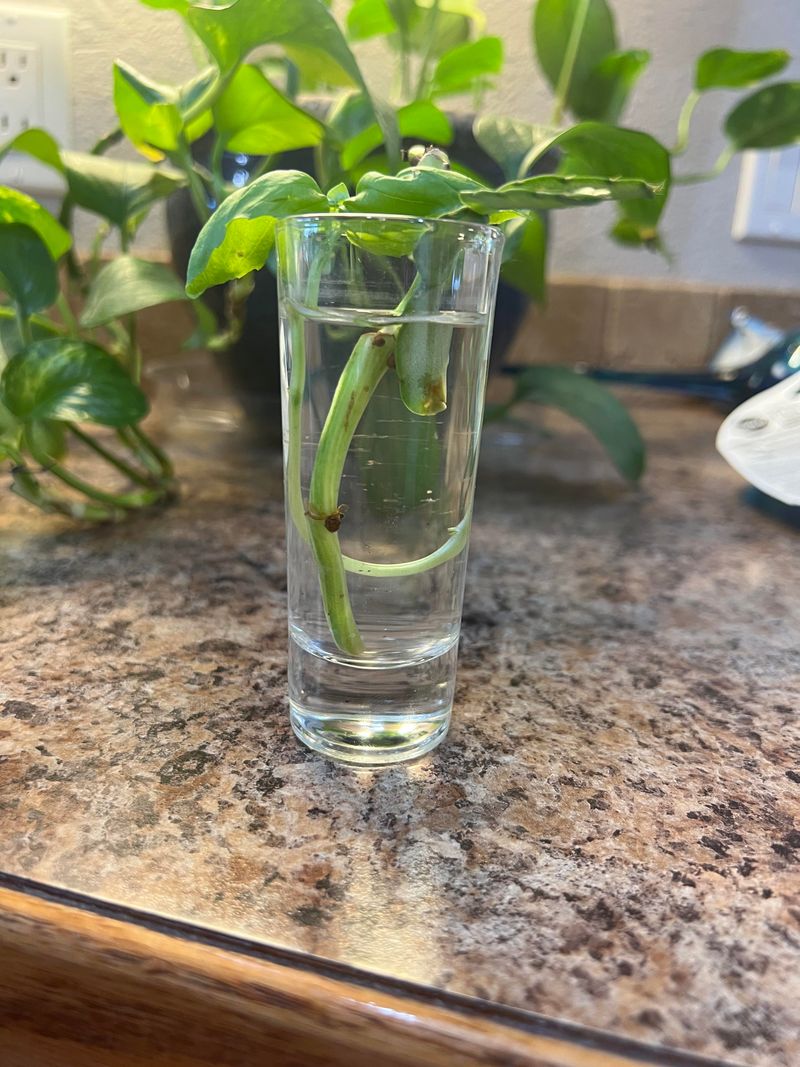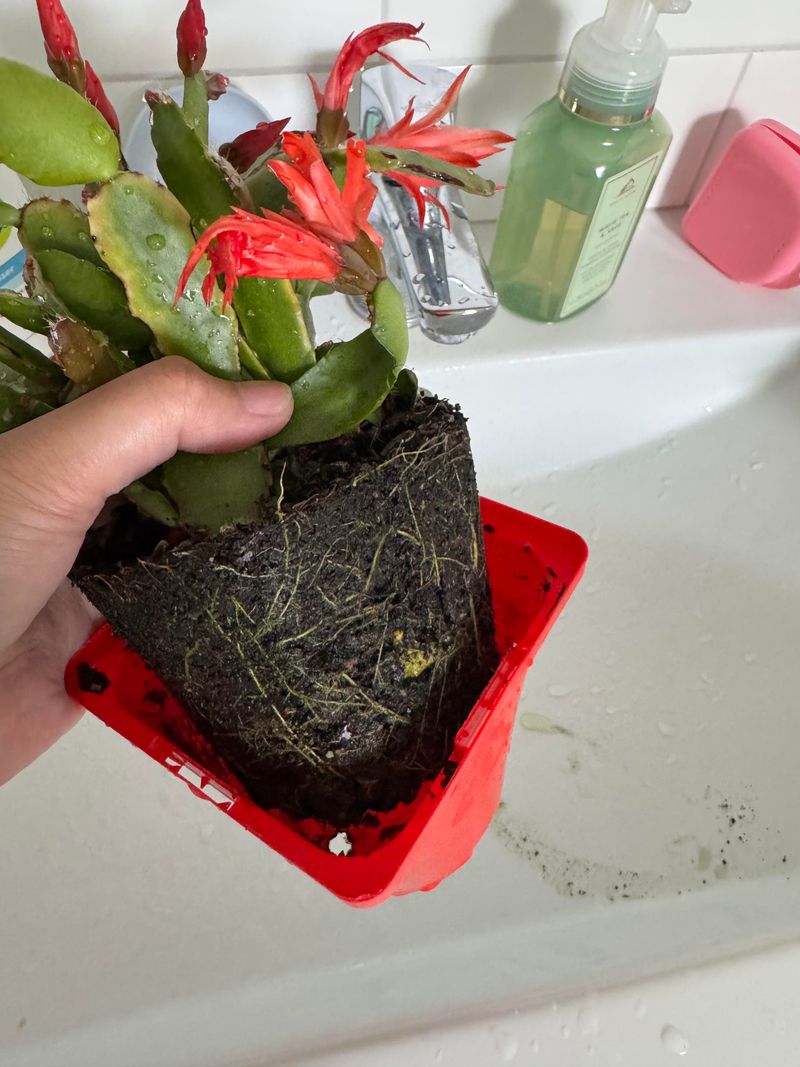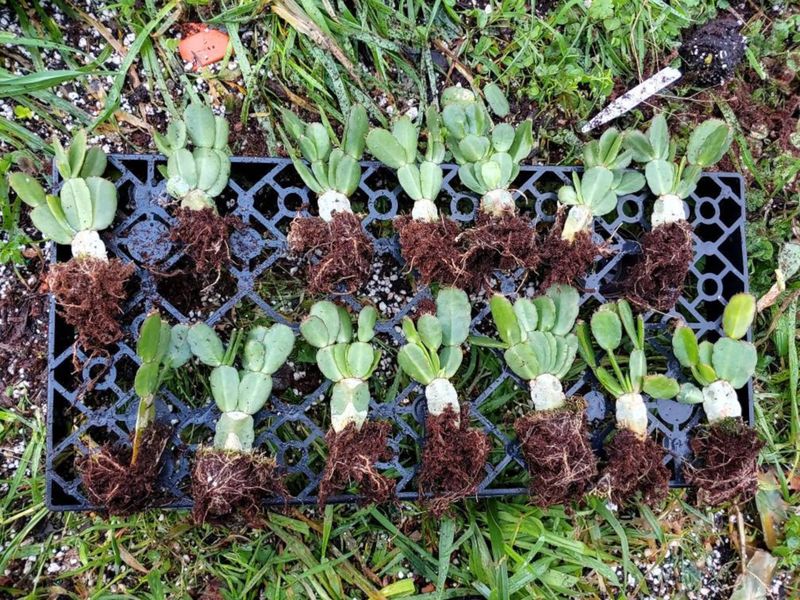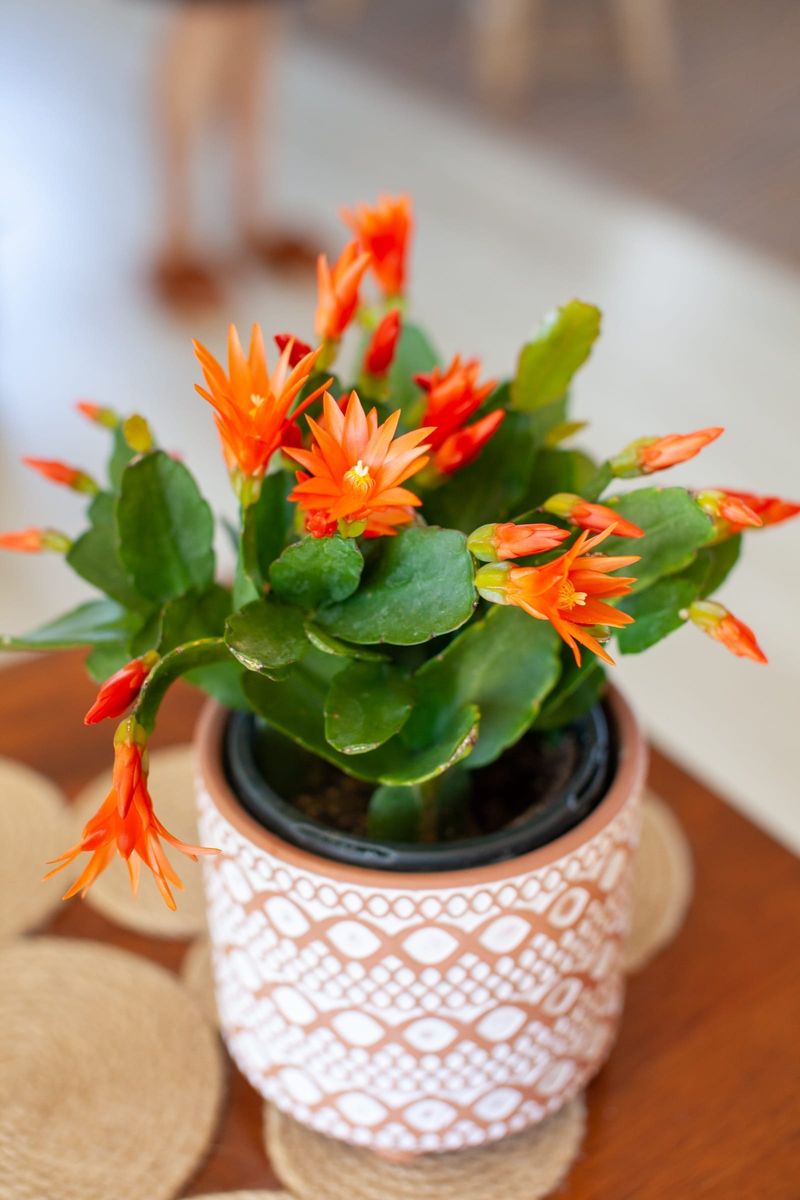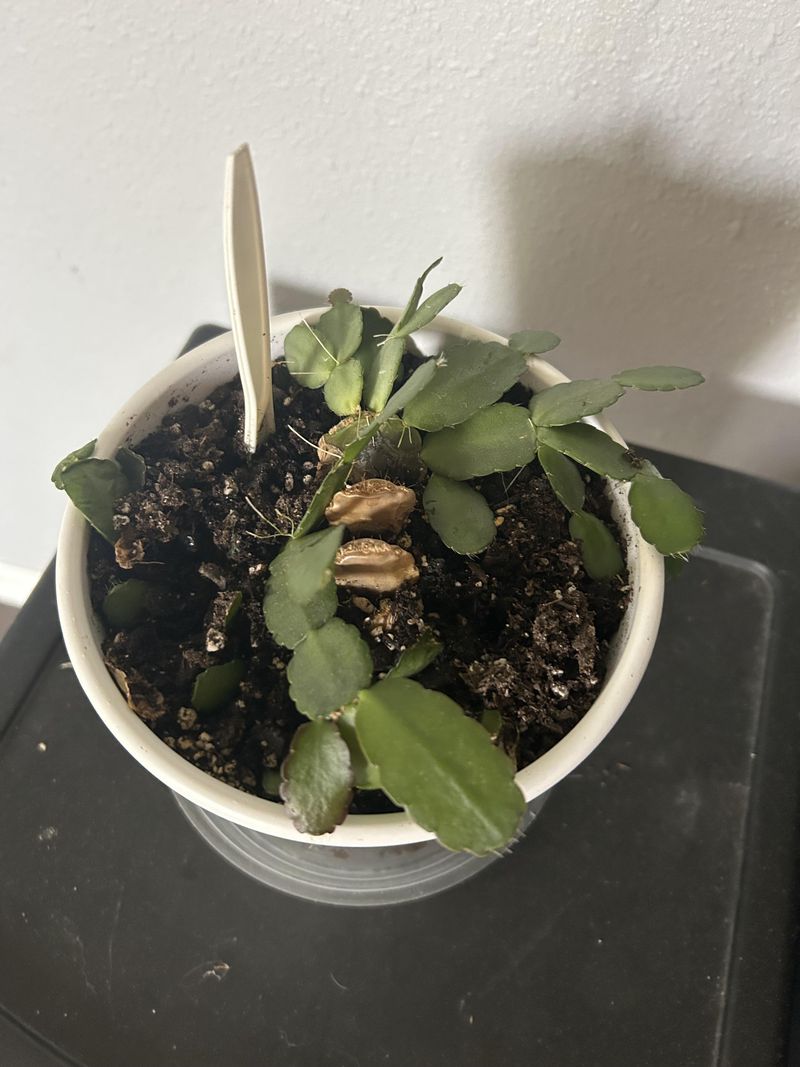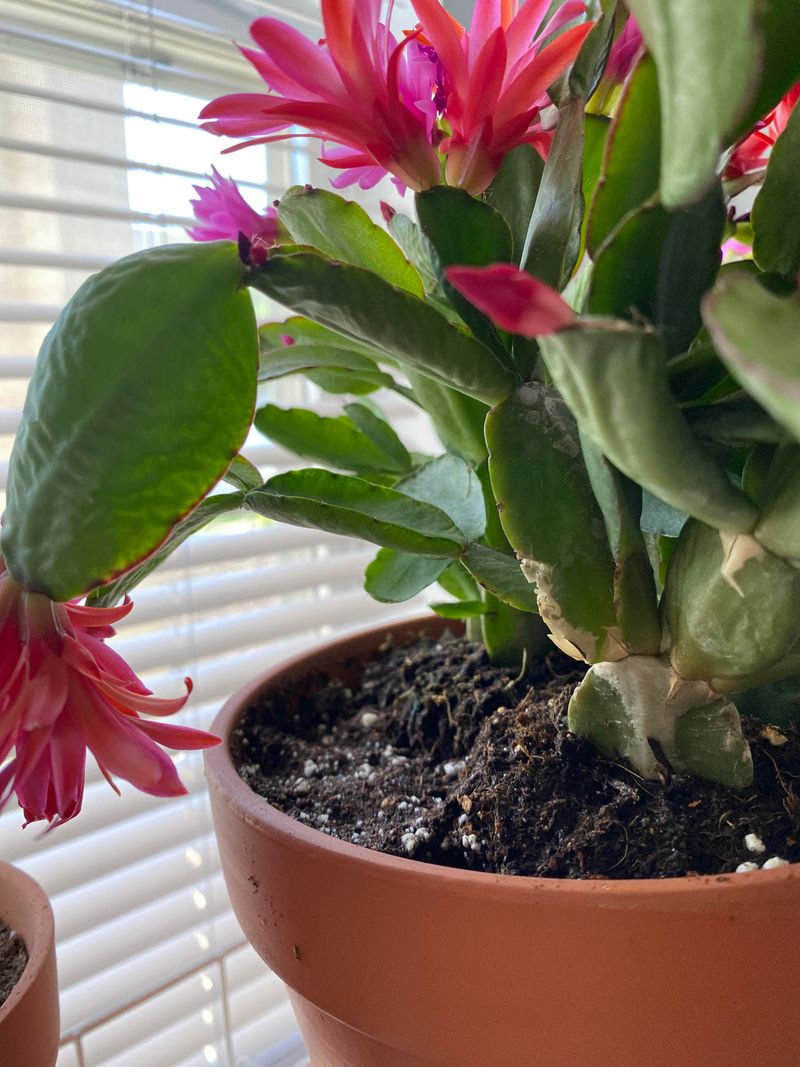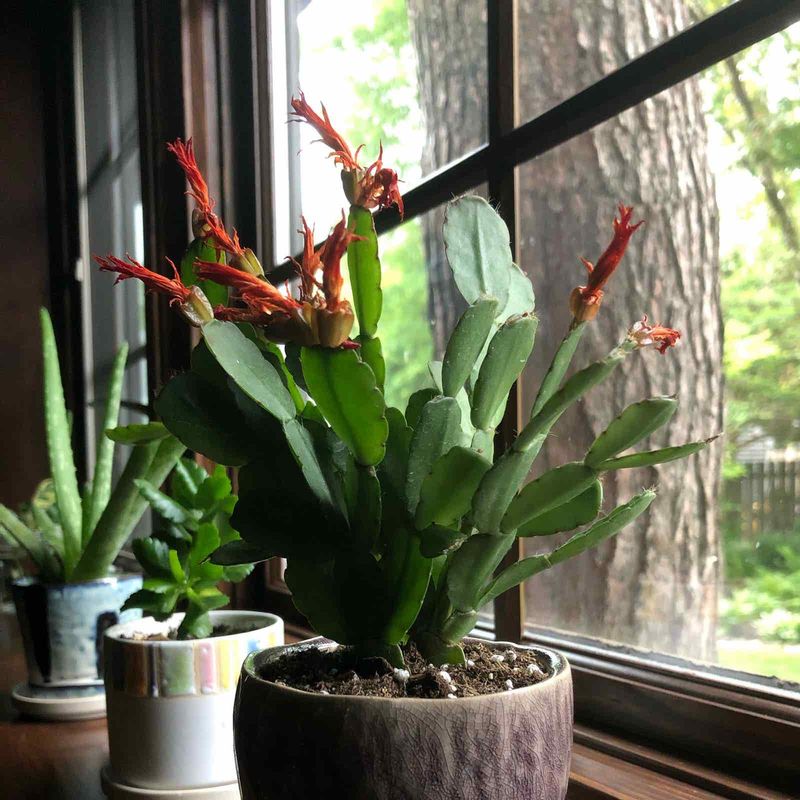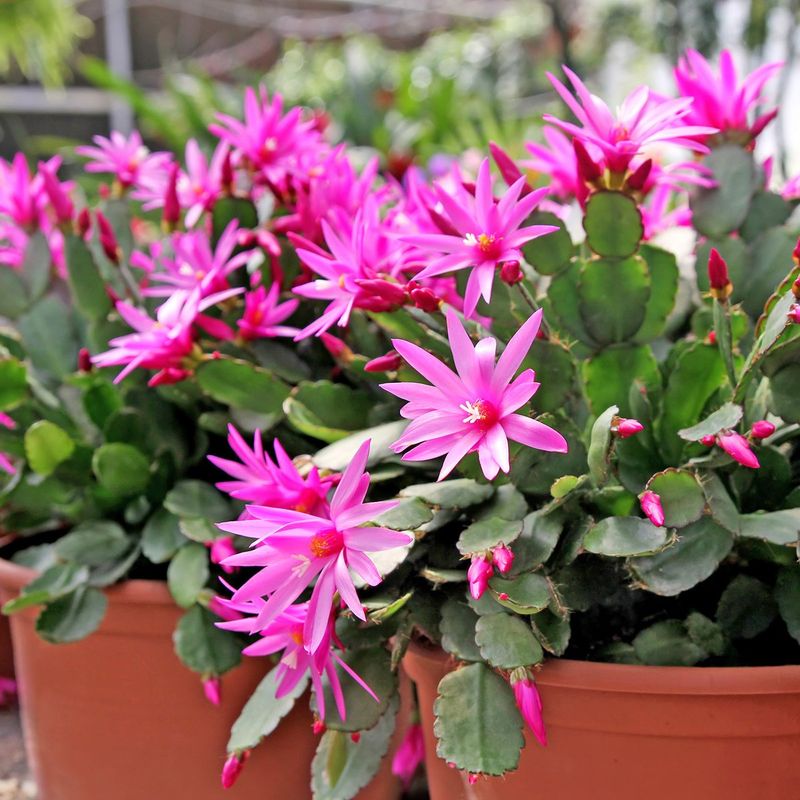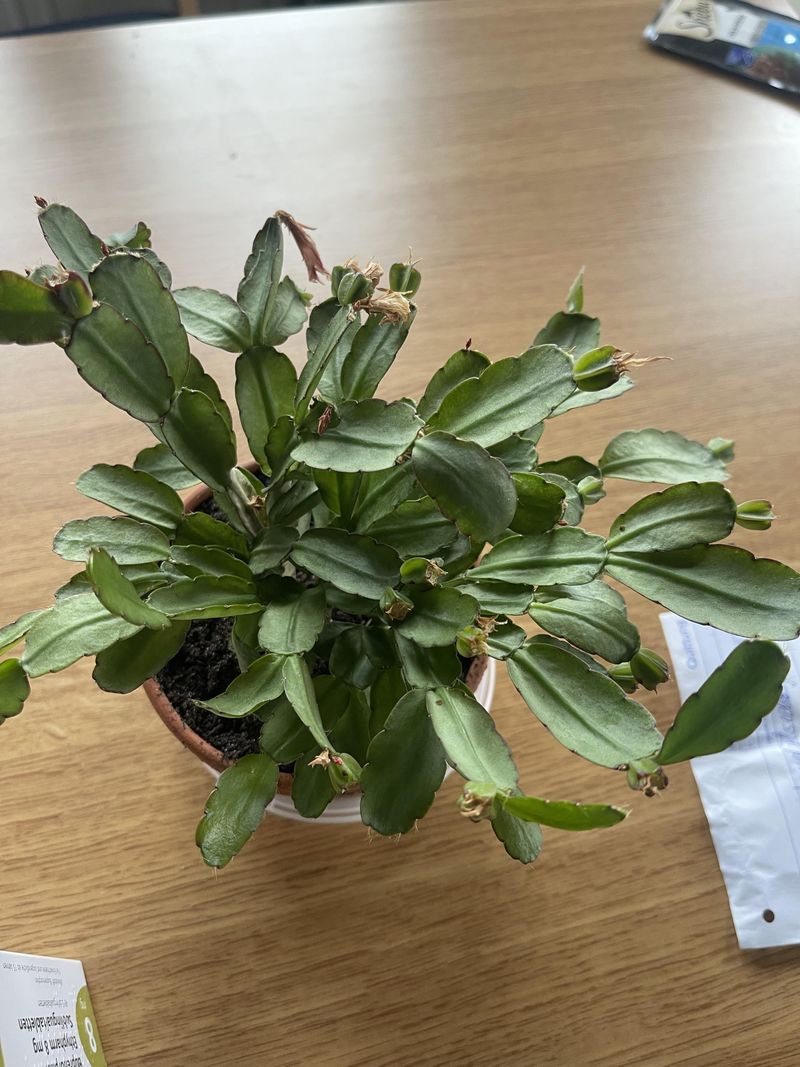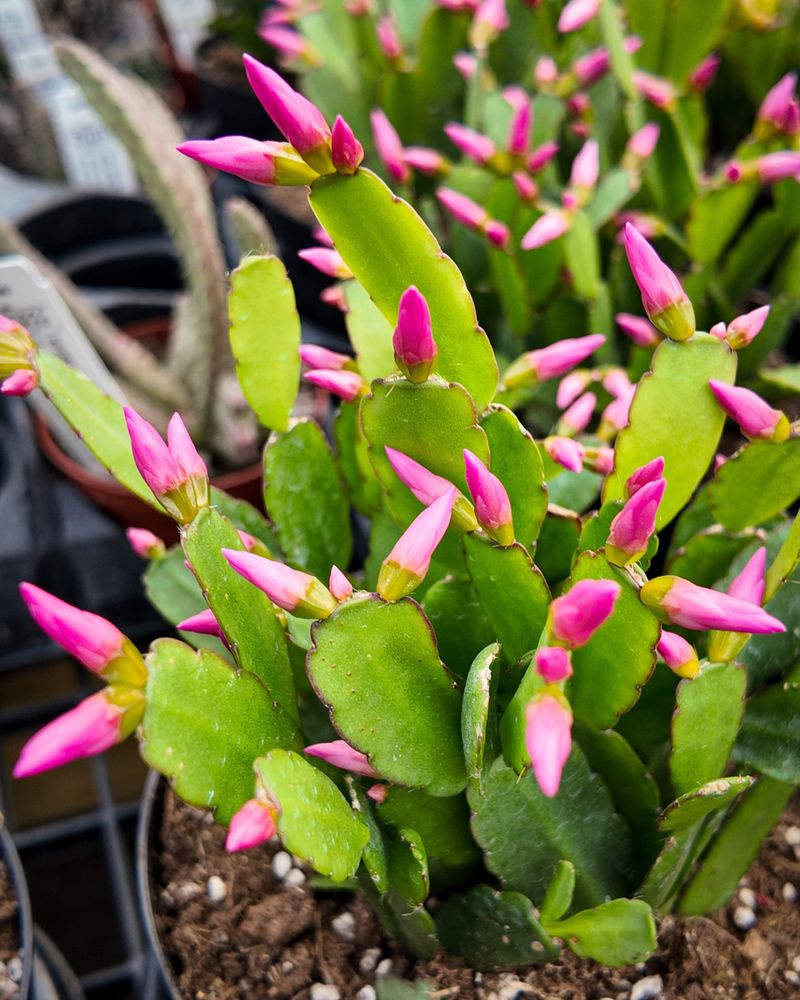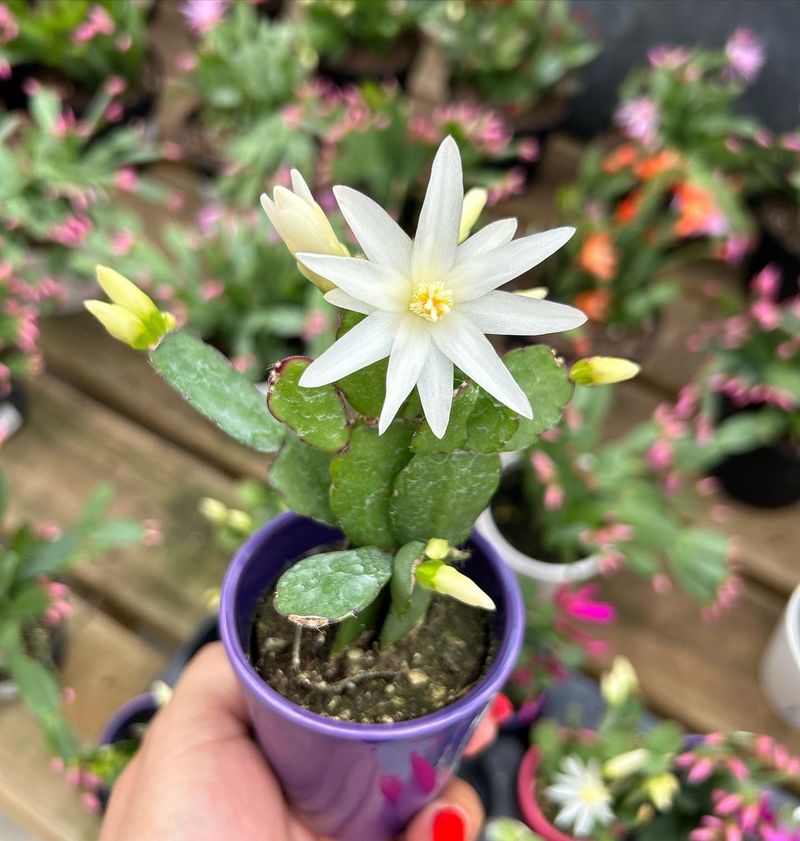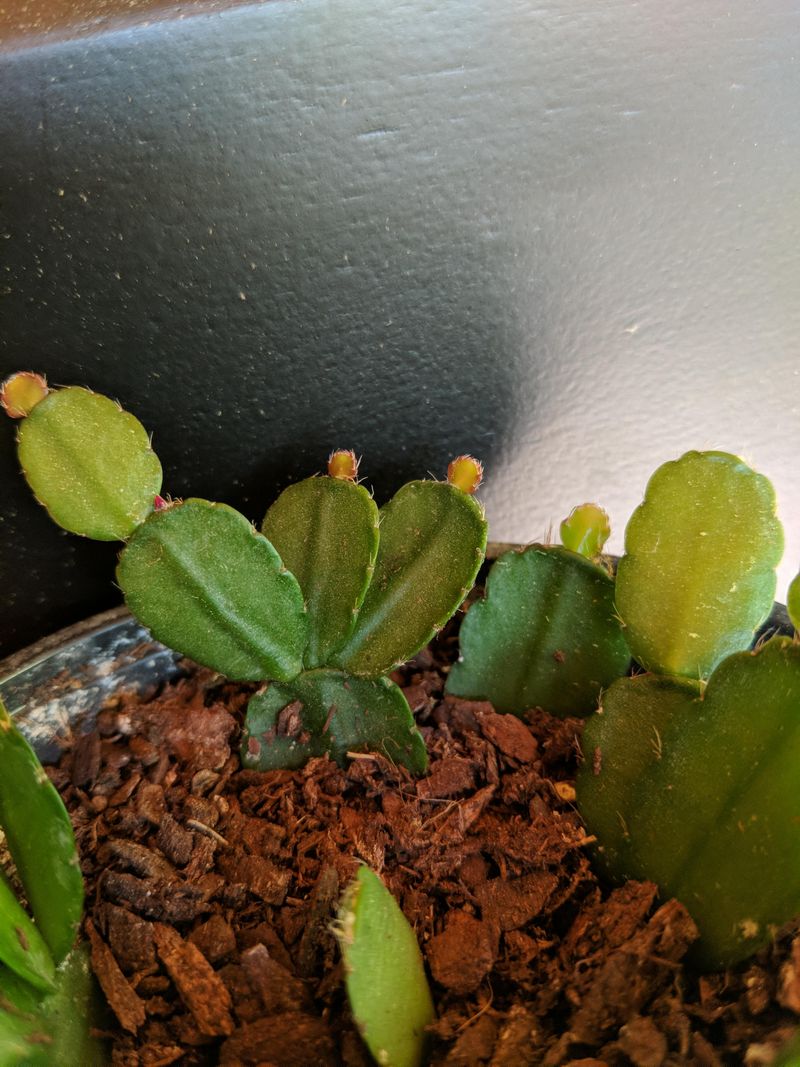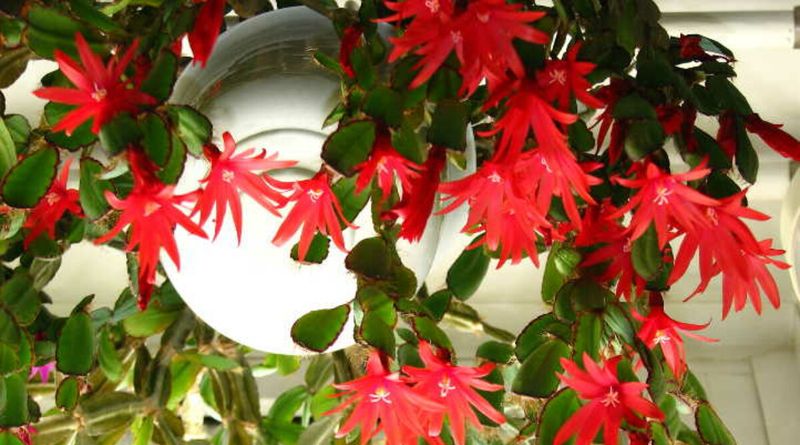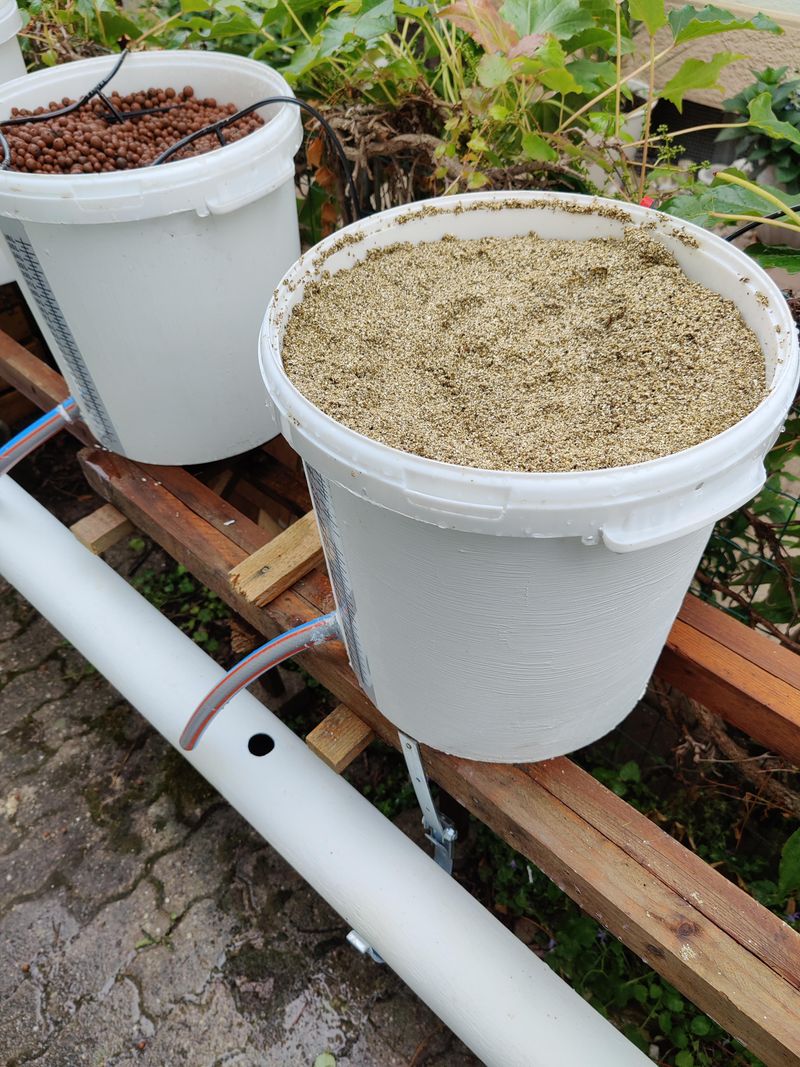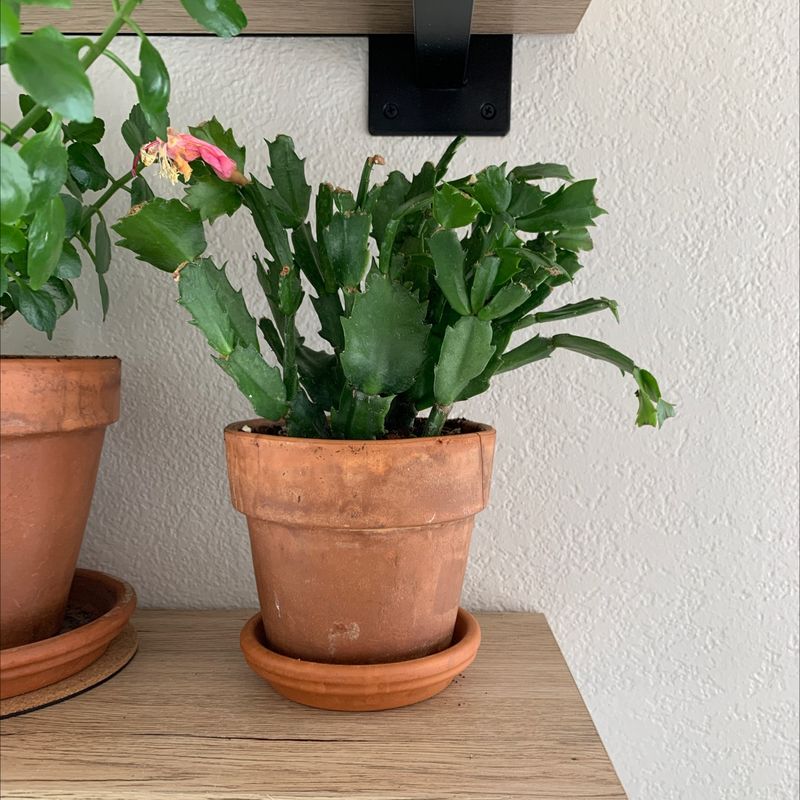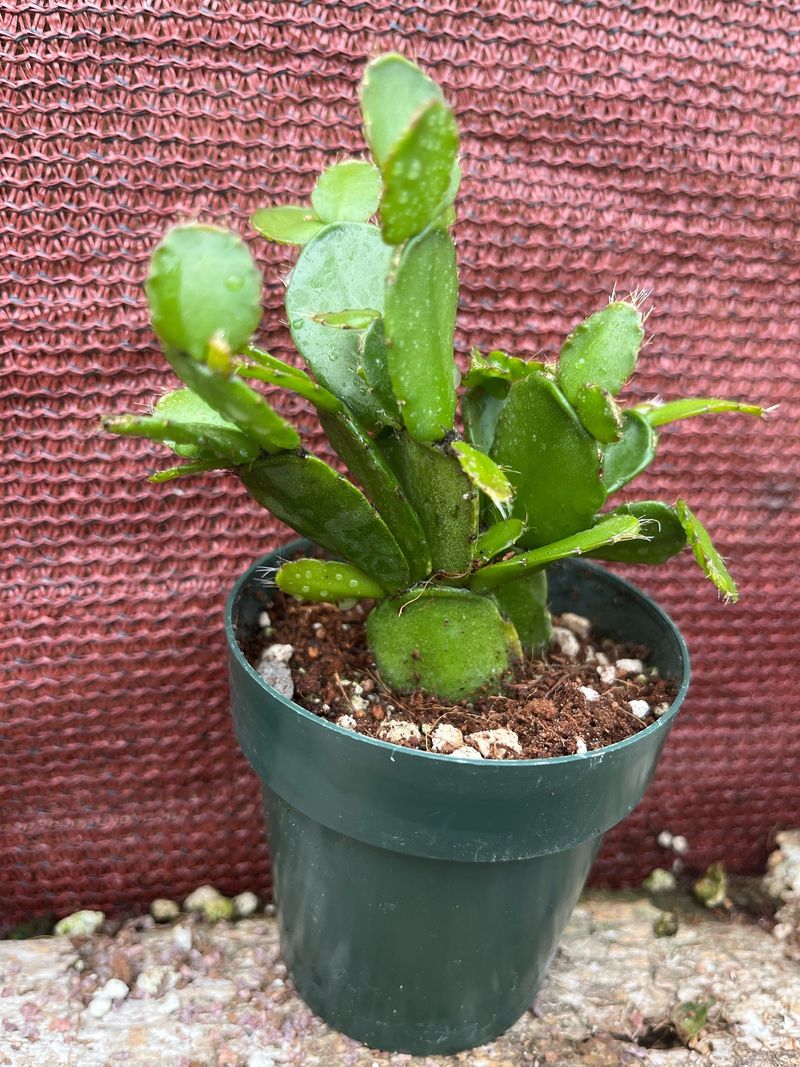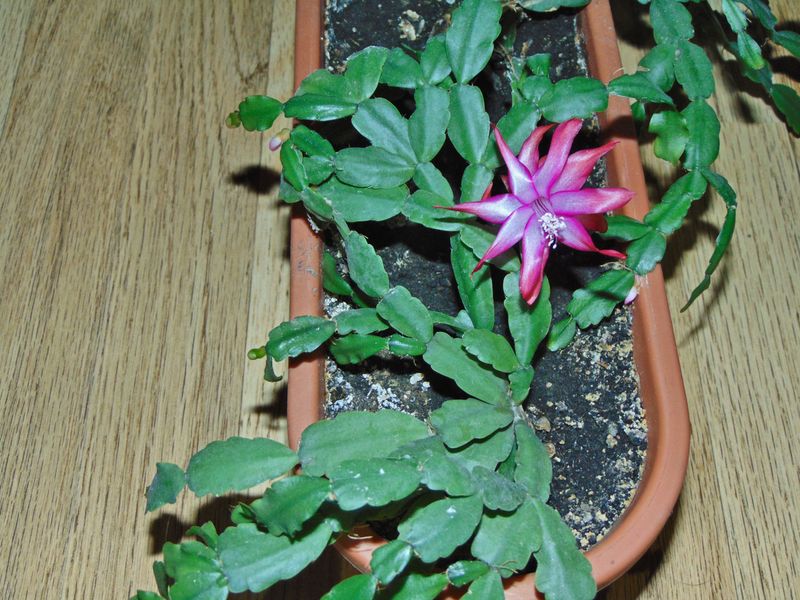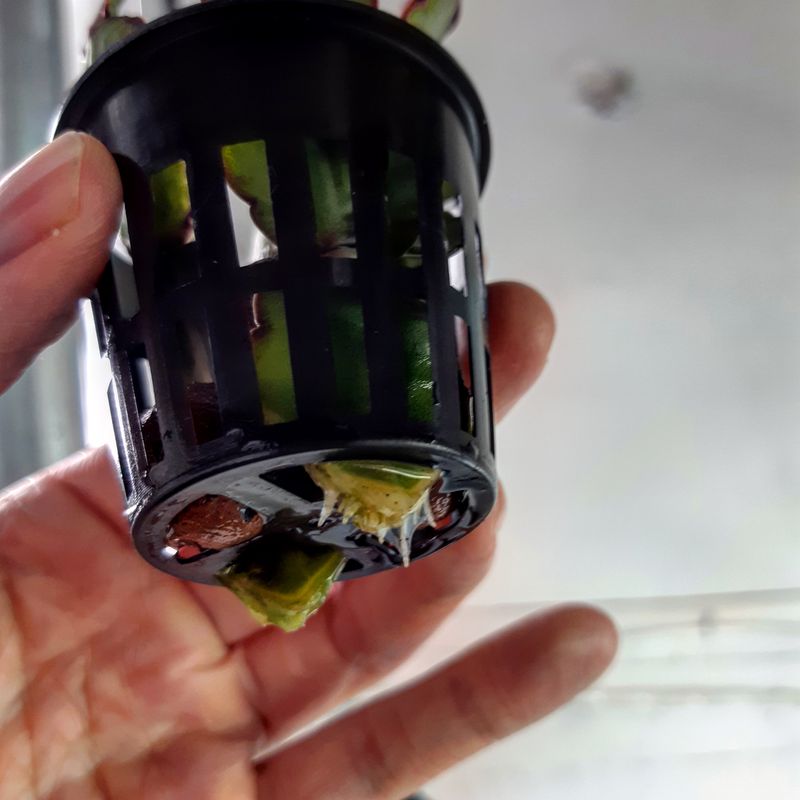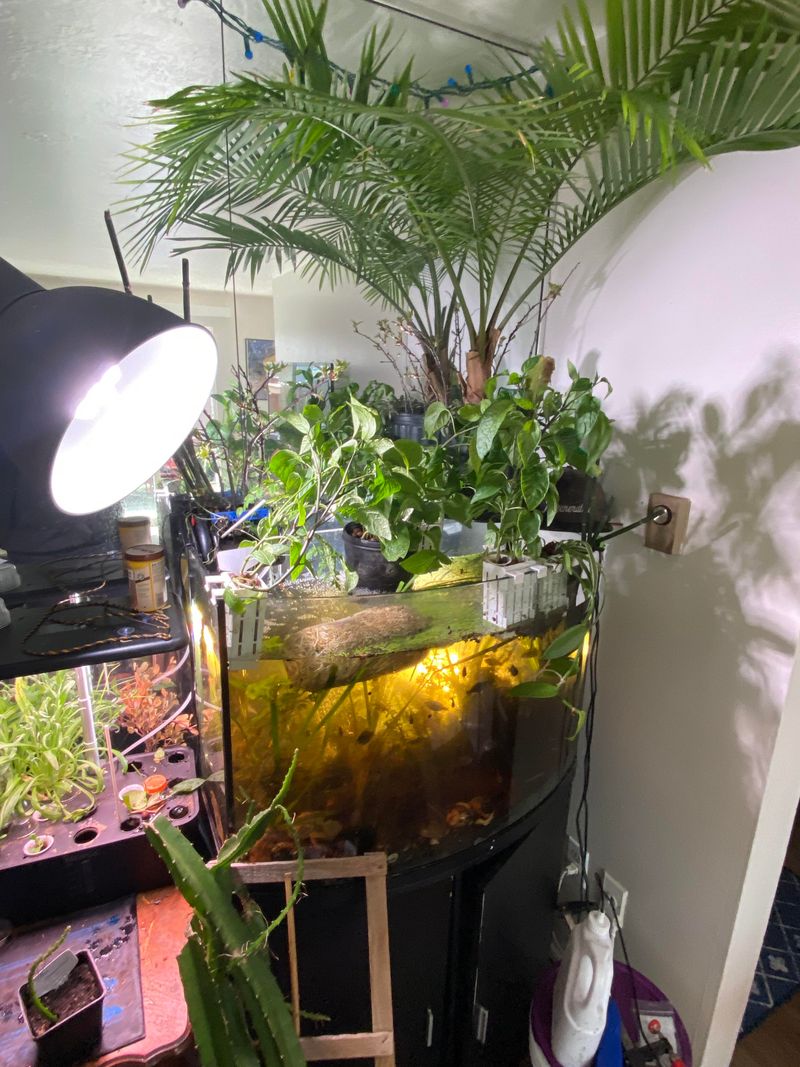Propagating Easter cactus can be a great journey filled with creativity and experimentation.
With its resilient nature, this charming plant offers numerous ways to multiply, each with its own unique twist. Whether it’s slipping a cutting into water or experimenting with grafting, there’s a method for every green thumb.
So, here are some of the fascinating propagation techniques, each offering a new adventure for your Easter cactus.
1. Cuttings In Water
Ever tried rooting cuttings in water? For me, it’s like watching a miracle unfold! You simply snip a segment of the Easter cactus and pop it into a jar of water. Within weeks, tiny roots emerge, delicate yet determined.
The sight is pure magic! One day, I noticed the roots twirling like dancers. It’s an enthralling process that speaks to nature’s wonders.
Keeping the water fresh and clear ensures the roots grow healthy and strong. This method is perfect for those who love a visual journey.
2. Soil Propagation
Planting cuttings in soil is all about patience and love. I once waited weeks, nurturing it with the hope of new growth.
Watching the first sprout burst from the soil felt like winning a little garden lottery. The key is maintaining the right moisture balance; too dry, and the cutting might wither.
It’s a rewarding experience that enhances your connection with nature.
3. Peat Moss Mix
Using this adds a fluffy touch to propagation. The texture feels like soft clouds cradling the cuttings. I adore the way it retains moisture while allowing air to circulate.
It’s a gentle embrace, coaxing roots to develop with grace. This method is perfect for nurturing young plants.
The peat moss creates an ideal environment, offering both support and nourishment. It’s a gardener’s dream come true!
4. Grafting Technique
It’s an art form that combines two plants into one harmonious entity. I remember my first attempt felt daunting yet thrilling.
The trick lies in matching the vascular bundles perfectly. With careful hands, I merged them, and voila!
A thriving masterpiece was born. It’s a technique that offers creativity and challenge in equal measure, creating something truly unique.
5. Leaf Padding
It involves wrapping a leaf segment in a damp cloth to encourage root formation. I find it soothing, like tucking in a child at night.
The moist environment cradles the leaf, coaxing roots to appear gently. It’s a nurturing approach, perfect for those who adore a tender touch.
The results are worth the wait, as new life springs from the wrapped leaf.
6. Humidity Dome
Creating a humidity dome is like crafting a mini tropical paradise. The enclosed space captures moisture, fostering an ideal climate for growth.
I once crafted a dome from recycled materials, turning my windowsill into an exotic escape. It was pure joy watching the cuttings thrive beneath their cozy canopy.
The key to success lies in maintaining airflow to prevent mold. This technique brings the tropics to your home.
7. Using Rooting Hormone
This acts like a magic wand, speeding up root development. It’s a little powder that holds immense power. I’ve always been amazed by the transformation it induces.
A quick dip, and the cuttings gain newfound vigor, ready to embrace soil or water.
This method is perfect for those seeking a boost in propagation success. It’s like giving your plants a head start in life!
8. Bottom Heat
The gentle warmth encourages faster root growth, and I’ve seen remarkable results with this method. It reminds me of cozying up by the fire on a cold evening.
The heat mat creates an inviting environment, perfect for nurturing new roots. It’s an effective technique, especially in cooler climates.
Sounds good, right?
9. Air Layering
This feels like a secret gardening trick. It involves wrapping a stem section with moss and plastic to encourage root growth. I remember feeling like a plant whisperer, coaxing roots from the air.
It’s a method that combines science and wonder, resulting in a new plant right from the parent. The process is fascinating and offers a unique way to propagate with flair.
10. Indirect Sunlight
Placing cuttings where they can enjoy soft light helps them thrive without stress. It’s a setup that feels like a gentle morning wake-up call.
I love watching the light play across the leaves, knowing it’s fueling new beginnings. It’s a subtle yet effective way to nurture young plants. Interesting, right?
11. Hydroponic System
Hydroponics takes Easter cactus propagation to a futuristic level. Growing in nutrient-filled water, it offers a clean, soil-free environment.
I’ve always found it like a sci-fi garden, where plants float weightlessly. The roots dangle freely, drinking in sustenance.
It’s a modern method with impressive results, perfect for tech-savvy gardeners. The system creates a fascinating interplay of nature and innovation.
12. Misting Routine
This method is perfect for maintaining moisture balance, ensuring beautiful plants. Misting is like offering a refreshing drink to your plants.
A gentle spray keeps the cuttings hydrated without drowning them. I find it oddly satisfying, like a spa day for leaves. The delicate droplets encourage happy, healthy growth.
13. Propagation Station
Creating a propagation station feels like setting up a botanical lab. It’s a dedicated space where cuttings can root in serenity.
I once transformed a corner of my home into a propagation haven, filled with glass tubes and greenery. Watching each cutting develop was like conducting a plant symphony.
It’s an elegant and organized approach to propagation. Perfect for those who enjoy structure and beauty.
14. Leaf Cuttings
These offer a simple yet effective way to propagate. Just a small leaf segment can give rise to a whole new plant.
I’ve always marveled at how a single leaf holds such potential. Plant it carefully, and watch it flourish into something magnificent. Isn’t that amazing?
15. Baby Food Jars
Using these jars for rooting is an adorable method. These tiny containers make perfect homes for cuttings. I’ve always found it charming, like creating a miniature plant nursery.
The jars offer a clear view, allowing you to witness root growth up close.
It’s perfect for those who enjoy a playful approach.
16. Tissue Culture
This feels like stepping into a high-tech botanical world. It’s a precise, sterile method that multiplies plants rapidly.
I remember my first encounter felt like a scientific adventure, wielding test tubes and microscopes.
The results are astonishing, producing countless new plants efficiently. It’s a technique for the adventurous gardener, blending science and growth.
17. Pebble Tray
It’s a gentle technique, perfect for creating a spa-like environment for your plants. A pebble tray offers a subtle way to boost humidity. Placing cuttings on a bed of pebbles creates a humid microclimate.
I love the simplicity, like using nature’s tools to enhance growth. The combination of water and stones supports healthy development.
18. Vermiculite Medium
This provides a lightweight, airy medium for propagation. It feels like planting in fluffy clouds, offering excellent drainage and moisture retention.
I’ve always enjoyed the ease of handling and the way it cradles the cuttings. The roots thrive in this environment, encouraged by the optimal conditions.
It’s a method that blends comfort and efficiency perfectly.
19. Perlite Addition
Adding perlite to soil brings a breath of fresh air to propagation. The white specks lighten the soil, improving aeration and drainage.
I love how it transforms the growing medium, making it more plant-friendly.
Watching cuttings flourish in this mix is deeply satisfying. It’s a simple yet profound addition that enhances growth beautifully.
20. Coconut Coir
A tropical twist to propagation. This fibrous material retains moisture well, providing a perfect cradle for cuttings.
I adore the sustainable nature of coir, offering an eco-friendly option. The cuttings thrive, nourished by this natural, renewable medium.
21. Sphagnum Moss Nest
Sphagnum moss offers a snug nest for propagation. The soft, green moss creates a gentle environment, perfect for rooting cuttings.
I enjoy the tactile experience, feeling like a nature artisan crafting a cozy bed. The moss retains moisture beautifully, promoting healthy growth.
It’s a technique that combines aesthetics and function effortlessly.
22. Mini Greenhouse
A mini greenhouse turns propagation into an adventure. The clear enclosure captures warmth and humidity, creating a perfect haven.
I once crafted a mini greenhouse from an old fish tank, watching my cuttings thrive. The transformation was magical, with new growth emerging like a secret revealed.
It’s a method that combines innovation and tradition seamlessly.
23. Aquaponics
Aquaponics marries fish and plants in a symbiotic relationship. The fish provide nutrients, while plants purify the water. I’ve always found it a fascinating dance of nature, where each element supports the other.
Setting up an aquaponics system feels like a living, breathing ecosystem. It’s a method that offers sustainability and beauty in one.


